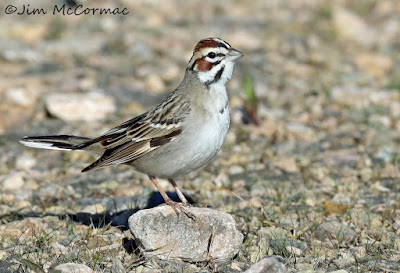I spent a fine day in Indianapolis last Sunday, at the stellar Indianapolis Museum of Art. The museum has on display a selection of about 75 original prints from John James Audubon's seminal work, Birds of America. It's well worth a visit to see Audubon's incredible illustrations, but the museum has much more to offer, both inside and out. On the outside is 152 acres of incredible landscapes that is treated as living art. Many native plants are incorporated - in fact, the dominant biomass is native. Thus, the grounds play host to a variety of birds and other wildlife. I gave a talk on Audubon, his art, life, and travels in one of the museum's auditoriums, but beforehand was able to tag along with the museum's chief horticulturalist, Chad Franer, as he led a walk around the museum's property. I highly recommend a visit.
One of the first species I encountered was a confiding Prairie Warbler. He seemingly burst with the pleasures of spring, as he sang his rising buzzy melody from the perches that define his turf.
This bird, however, was my primary target - the Lark Sparrow. It is one of my favorites among the Emberizidae, and it's hard picking favorites in such a family of stunners. For us Ohioans, the Lark Sparrow is always a treat. While it becomes quite common to the west, this species is at the eastern periphery of its range here, and quite uncommon. This fellow and at least three others were singing their peculiar buzzy trills from prominent perches. No shrinking violet, the Lark Sparrow.
I was at the park at the crack of dawn, and thus had the place to myself. So, I operated as usual when trying to photograph songbirds. After determining the location of several oft-used perches by one of the territorial sparrows, I sidled into a good position and just waited for him to make his rounds. That's how I got the previous shot. It must be said, though, that the Lark Sparrow is rather tame and not difficult to get near. Nonetheless, I wanted - as always - candid shots of the birds acting naturally, and even with Lark Sparrows that takes a bit of time and patience.
Lark Sparrows remind me of elfin quail, and like quail they spend much time on the ground foraging for plant seeds and small insects. Before long, the singer I was photographing flew to the ground not far from me and began picking about. In short order, his mate joined him and they eventually worked so close to me that I couldn't focus on them. In the shot above, the male hops atop a rock to eye me curiously, then continued on with his activities.
The birds eventually began collecting old plant stems for a nest. This fellow is quite ambitious in his selection of material.
Map courtesy of Birds of North America Online.
As can be seen by this fine map, the Lark Sparrow is largely a bird of the Great Plains. Its breeding range barely extends as far east as Ohio, which is why it is such a notable treat here. The Buckeye State stronghold has long been the open sandy habitats of the Oak Openings west of Toledo, a place that they've probably bred for thousands of years. But more and more, Lark Sparrows are utilizing - in very small numbers - large abandoned stone quarries such as the one that I visited on this trip.






No comments:
Post a Comment